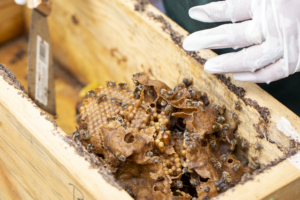
Huitlacoche – the Aztec caviar
One of the problems with crops is diseases that destroy harvest and spread quickly. Farmers have many solutions, such as fertilizers or crop rotation. In Mexico, however, maize disease was treated in a very different way. Centuries ago, the Aztec tribes realized that they could make use of infected plants. Corn stalk is a plant disease caused by the pathogenic fungus Ustilago maydis, which causes corn stalk and teosinte. This disease forms galls on all above-ground parts of corn.

The Aztec mushroom
The name huitlacoche comes from the Nahuatl language spoken by the Aztecs and is still used by over a million people in central Mexico. Huitlacoche has been an important food for the indigenous peoples of the southwest for centuries. So much so that the mushroom has ceremonial, culinary, and medicinal uses. When it comes to the health aspect, huitlacoche offers more protein than regular corn and has high amounts of lysine, an essential amino acid that is not found in normal grains. Huitlacoche can be purchased at most Mexican grocery stores and comes frozen, jarred, or canned. Using huitlacoche in the kitchen is very simple as it is technically considered a vegetable, it can be eaten raw. It is a soft mushroom that changes color from gray to black during thermal processing, which is also the hallmark of dishes with it.
From Mexico to America
However, this “product” was presented to the American public in a big way. And all thanks to Josefina Howard – a Cuban chef who popularized regional Mexican cuisine in New York. She was the founder and first owner of Rosa Mexicano, where she was the chef in 1989 James Beard House served dinner with huitlacoche. Modified corn grains are so well remembered and tasted by guests that this delicacy is still served in Rosa Mexicano restaurants. The current regional chef of Rosa Mexicana, Joe Quintana, says this ingredient goes well with many things. You can combine it with sauces, chicken, beef, or even corn. Its earthy flavor pairs well with cheese, for example in quesadillas.

Another restaurant serving this ingredient is located in Mexico, Nicos was founded in 1957. This is where first María Elena Lugo Zermeño and since 1996 her son Gerardo Vázquez Lugo serve Mexican home cooking at its best. Of course, celebrating the huitlacoche, which they say is a thousand-year-old ingredient associated with the rainy season. The period for harvesting this mushroom falls in May-November, i.e. after the corn season.









Post a comment